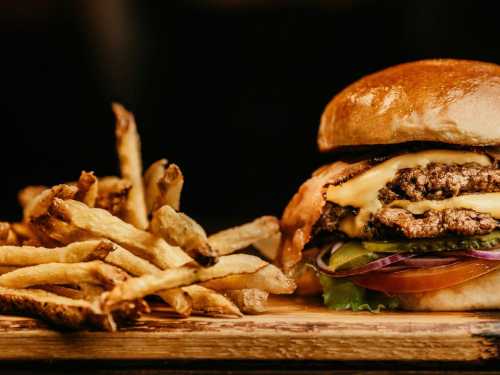
In response to President Donald Trump’s mockery, Sen. Elizabeth Warren (D-MA) turned to genetic science to answer a simple question about herself: Does she have Native American ancestry, as she has long claimed?
On Monday, she publicized a genetic ancestry report that confirms that some six to 10 generations ago, one of her ancestors was a native American. (The Boston Globe was the first to see the results.) And on Twitter, she reminded President Trump, who has routinely called her “Pocahontas” in cruel jest, of his promise in July to donate $1 million to charity if she took the test.
In a way, the reveal is trivial: All it shows is that she had an ancestor, among hundreds in her family tree, from a Native American tribe. Her DNA, as analyzed by Stanford genealogy expert Carlos Bustamante, reveals her to be between 1/1024th Native American and 1/32nd Native American.
But it’s also indicative of how genetic testing is changing the way millions of people think about their own heritage. The companies that provide ancestry testing, like Ancestry.com and 23&Me, market their product in a way that suggests their test reveals something deeply meaningful about you. For many — especially people who have been adopted and don’t know their ancestry — this might be the case.
But these tests also come with a lot of caveats, especially for people who are not of white, European descent.
How ancestry DNA tests work
On the level of genes, human beings are remarkably similar to one another: 99.9 percent of all our DNA is identical. All the genetic variations that direct one person to be different from another are found in just that tiny fraction of our genome. These differences are called single nucleotide polymorphism (SNPs, or “snips” for short). Where you may have the nucleotide adenine at one of these SNPs, I might have the nucleotide cytosine. These tiny letter changes are what DNA ancestry tests are looking for.
Some of these SNPs are meaningful for our health, signaling risk for conditions like coronary artery diseases. Others work in tandem to determine our eye color or our height.
Still other SNPs are biologically meaningless, or have a biological significance that is not yet understood. Though meaningless in terms of biology, these tiny, random changes are often passed down in generations. If you have some of these SNPs in common with another person, you may share a common ancestry.
This is roughly how companies like 23andMe, Ancestry.com, and MyHeritage work. They compare your set of SNPs to known reference groups (SNPs that tend to be found in people of, let’s say, Greek origin).
Related
How your third cousin’s ancestry DNA test could jeopardize your privacy
From here, the companies make some estimates about what percentage of your DNA came from which corners of the world. In Warren’s case, 95 percent of her DNA has likely been inherited from European ancestors.
According to the Boston Globe, Warren had her DNA analyzed by a private lab in Georgia and then sent the results to Sanford’s Bustamante — who specializes in using DNA to track human migration across history — for analysis. Bustamante was able to estimate, with a range of error, how far back Warren’s Native American ancestor lived (something 23&me tries to estimate as well).
DNA ancestry tests are fascinating. But they come with a lot of caveats.
Here’s an important caveat: Ancestry DNA tests don’t tell you where each member on your family tree lived; they tell you how much of their DNA that you’ve inherited. Recall that you inherit half your DNA from your mom and half your DNA from your dad. But your dad may not pass on to you all of the genes he inherited from, for example, the Sardinian side of his family.
That’s why siblings can get different reports from DNA ancestry services (even though they share the exact same relatives). “Even identical twins can get slightly different estimates,” Yaniv Erlich, the chief scientific officer at MyHeritage, says in an email.
That’s also due to the fact that even the best DNA ancestry tests come with some noise and range of error built in. You’re also likely to get slightly different results from different ancestry companies, which use different algorithms and make slightly different assumptions and decisions about how many generations back in your history to include in your report.
“The approach taken by all of the commercial companies is to try to estimate the general geographic regions where your ancestors lived (and in a select small number of cases their ethnic identifiers) some indeterminate time in that past, probably something like a few hundred years ago,” writes Joe Pickrell, a geneticist and CEO of Gencove, a company that sells genotyping technology. “Does this all sound a bit vague? It should because it is.”
Also, the specificity of your ancestry reports may vary based on your background. As the Globe noted, “Detecting DNA for Native Americans is particularly tricky because there is an absence of Native American DNA available for comparison.”
Ancestry DNA companies can often track down European DNA to specific countries. But if you’re from a minority, your report might be vaguer. Prior to this summer, 23andMe could only match people to just three broad regions in sub-Saharan Africa, which is an enormous area with a lot of geographic and ethnic diversity.
The information available for minorities is getting better each year, but it is still limited by the fact that most ancestry DNA analyses are done on people of European descent.
DNA ancestry is about geography, not heritage
It’s also important to remember that DNA is not the same as heritage. DNA ancestry tests sort your DNA by the geographic regions you likely inherited it from. But not everything about our family histories is geographic.
“Obviously no genetic markers change when someone converts to Judaism, or when the territory where someone lives is annexed by a neighboring country,” Pickrell writes on Medium. “But these events often have dramatic influences on how the descendants of these individuals think of their ancestry, via cultural transmission of things like languages and traditions.”
These tests don’t tell us about the languages our ancestors spoke, the food they ate, or whether they were celebrated or persecuted. Human history is a messy, migratory affair, much too complicated to track simply via DNA. And the exact percentages of where our DNA comes from may not matter either. If your sibling inherits slightly more Scandinavian DNA than you, does that make them more Scandinavian? No.
For these reasons, many are uncomfortable with the idea of heritage as something that needs to be corroborated with DNA evidence (or the similar discomfort of people claiming they belong to a certain ethnic group based on a trivial amount of ancestry). DNA ancestry opens a small door to our past. We can learn things like the fact that many tens of thousands of years ago, humans and Neanderthals mated, though we can only speculate (and in fascinating ways) as to why.
Elizabeth Warren may be part Native American, but she already knew that from family lore. A DNA test doesn’t make her any more or less connected to those native ancestors. Will it quiet her critics? Probably not.
Sourse: vox.com






